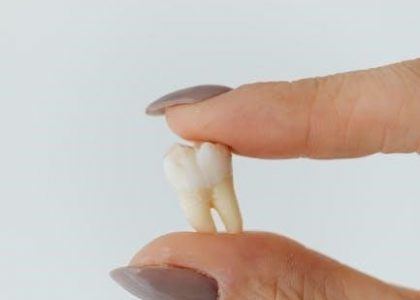Intimate Hair Removal Methods
Several methods exist for removing intimate hair⁚ shaving offers quick results, waxing removes hair from the root for longer lasting smoothness, depilatory creams dissolve hair at the surface, and epilators pluck hairs individually.
Shaving
Shaving is a quick and readily accessible method for intimate hair removal; However, it’s crucial to use a sharp razor and shaving cream or gel designed for sensitive skin to minimize irritation and razor burn. Always shave in the direction of hair growth to prevent ingrown hairs. Rinse the razor frequently to remove hair and shaving cream buildup. Consider using a moisturizing lotion or aftershave balm afterward to soothe the skin. Remember, shaving only removes hair at the surface, leading to frequent re-shaving. A new razor is recommended for each shave for optimal results and to prevent bacterial infection. While convenient, shaving might not be the ideal long-term solution for everyone. Experiment with different techniques and products to find what works best for your skin type and sensitivity. Proper preparation and aftercare are key to a comfortable shaving experience.
Waxing
Waxing is a popular method for removing hair from the root, offering longer-lasting smoothness than shaving. However, it can be more painful, especially in sensitive areas. There are two main types⁚ hard wax, which is applied thickly and removed without strips, and soft wax, which requires cloth strips for removal. Hard wax is often preferred for intimate areas due to its gentler nature on sensitive skin. Before waxing, ensure the hair is at least ¼ inch long for optimal results; Apply the wax in the direction of hair growth and remove it in the opposite direction quickly. Post-waxing, apply a soothing lotion or aloe vera gel to calm the skin. While waxing provides longer-lasting results than shaving, it’s crucial to follow aftercare instructions to minimize irritation and prevent ingrown hairs. Professional waxing services are available for those seeking a more comfortable experience.
Depilatory Creams
Depilatory creams are chemical-based hair removal products that dissolve hair at the surface of the skin. They are generally painless and easy to use, making them a popular choice for those seeking a less irritating method than shaving or waxing. Before applying, always perform a patch test on a small area of skin to check for allergic reactions; Apply a generous amount of cream to the desired area, ensuring complete coverage of the hair. Leave the cream on for the recommended time, usually between 5-10 minutes, as indicated on the product packaging. Gently remove the cream with a spatula or damp cloth, then rinse the area thoroughly with water. Some creams contain soothing ingredients like aloe vera to minimize skin irritation. However, prolonged contact with the cream should be avoided to prevent potential skin damage. Always follow the manufacturer’s instructions carefully and choose a cream specifically formulated for sensitive skin if needed.
Epilating
Epilating uses an electric device with tweezers to remove hair from the root. This method provides longer-lasting results than shaving, lasting several weeks. However, it can be more painful than other methods, especially for sensitive skin. Before epilating, exfoliate the skin to remove dead skin cells and prevent ingrown hairs. Ensure the skin is dry before using the device. Hold the epilator at a 90-degree angle to the skin and move it slowly and steadily in the direction of hair growth. For the intimate area, use the device’s smaller head or attachment specifically designed for sensitive areas. Multiple passes may be necessary to remove all the hair. After epilating, apply a soothing lotion or cream to calm any irritation. Regular use can reduce the pain and discomfort over time as hair follicles become weaker. Consider using a numbing cream before epilating for increased comfort.
Choosing the Right Method
Consider your pain tolerance, skin sensitivity, hair growth patterns, and time commitment when selecting a hair removal method. Each technique offers varying levels of pain and longevity.
Sensitivity Considerations
The intimate area’s skin is delicate and prone to irritation. Shaving can cause razor burn and ingrown hairs, especially with sensitive skin. Waxing, while effective, can be painful, particularly for those with low pain tolerance. Depilatory creams may cause allergic reactions in some individuals; always perform a patch test beforehand. Epilating can also be painful and irritating, especially on sensitive skin, potentially leading to redness and inflammation. For sensitive skin, gentler methods like trimming or using specially formulated products for intimate areas are recommended. Always prioritize using products designed for sensitive skin and follow aftercare instructions carefully to minimize discomfort and irritation.
Hair Growth Patterns
Understanding hair growth patterns in the intimate area is crucial for effective hair removal. Hair doesn’t grow in a single direction; it often grows in multiple directions, requiring multiple passes with a razor or adjustments in waxing techniques. Ignoring this can lead to uneven hair removal, ingrown hairs, and irritation. For shaving, using short, gentle strokes in the direction of hair growth, and then against it, can minimize irritation. With waxing, the wax should be applied in the direction of hair growth and removed against it. Epilators need to be adjusted to accommodate different growth directions. Consider the natural direction of hair growth when choosing a method to optimize results and minimize discomfort. This understanding improves the overall efficiency and reduces negative effects.
Time Commitment
The time required for intimate hair removal varies significantly depending on the chosen method. Shaving is the quickest option, typically taking only a few minutes. Waxing, while offering longer-lasting results, demands more time, including preparation, application, and removal of the wax. Depilatory creams require application time, followed by a waiting period before removal, adding to the overall duration. Epilating is time-consuming, especially for larger areas, as it involves removing each hair individually. Laser hair removal, though a long-term solution, necessitates multiple sessions spread over weeks or months. Consider your available time and desired longevity of results when selecting your preferred hair removal method for your intimate area. Factor in preparation and aftercare as well.
Aftercare and Maintenance
Proper aftercare is crucial to prevent irritation and ingrown hairs. Gentle cleansing, moisturizing, and exfoliation promote healthy, smooth skin after hair removal.
Preventing Ingrown Hairs
Ingrown hairs are a common frustration after intimate hair removal. To minimize their occurrence, exfoliate the skin regularly before and after hair removal to prevent dead skin cells from trapping hairs. Use a gentle scrub or exfoliating mitt a few days before and after your hair removal session. Choose sharp razors or blades and replace them frequently for a clean shave, reducing the chance of hairs bending and growing back into the skin. Always shave in the direction of hair growth to further reduce irritation and ingrown hairs. After showering or bathing, gently pat the skin dry and apply a moisturizing lotion or cream to keep the skin hydrated and supple. Applying a thin layer of salicylic acid or glycolic acid can help exfoliate and prevent ingrown hairs. Avoid tight-fitting clothing immediately after hair removal, as it can trap sweat and increase the risk of ingrown hairs. If you notice ingrown hairs, resist the temptation to pick or squeeze them, as this can lead to infection or scarring. Instead, apply a warm compress to the area to soften the skin and gently encourage the hair to surface. For persistent ingrown hairs, consult a dermatologist or skincare professional for advice and treatment.
Soothing Irritated Skin
Intimate skin is sensitive, and hair removal can cause irritation. To soothe redness and discomfort, apply a cool compress to the area immediately after hair removal. Avoid harsh soaps and scented products, opting instead for gentle, fragrance-free cleansers. Aloe vera gel is a natural remedy known for its soothing properties; apply a thin layer to calm inflamed skin. Similarly, hydrocortisone cream, available over-the-counter, can help reduce inflammation and itching. Avoid tight clothing that could rub against irritated skin; loose, breathable fabrics are preferable. Resist the urge to scratch or touch the affected area, as this can worsen irritation and increase the risk of infection. If irritation persists or becomes severe, consult a dermatologist or healthcare professional. They can assess the situation and recommend appropriate treatment, possibly including prescription-strength creams or ointments. Maintaining good hygiene and keeping the area clean and dry is crucial for preventing infection and promoting healing.
Maintaining Smoothness
To maintain smooth skin after intimate hair removal, regular exfoliation is key. Gentle exfoliation helps prevent ingrown hairs by removing dead skin cells that can trap hair follicles. Use a soft washcloth or a gentle exfoliating scrub a few times a week. Avoid harsh scrubbing, which can irritate sensitive skin. Moisturizing is equally important; keep the skin hydrated with a fragrance-free lotion or cream specifically designed for sensitive skin. This helps prevent dryness and irritation, contributing to a smoother feel. Consider using products containing ingredients like aloe vera or shea butter for their soothing and moisturizing properties. Remember that the frequency of hair removal will depend on individual hair growth patterns. Regular maintenance, whether through shaving, waxing, or other methods, will be necessary to sustain smoothness. Paying attention to aftercare, like moisturizing and exfoliating, will significantly impact the longevity of your smooth results.
Additional Tips and Considerations
Professional services like laser hair removal offer long-term solutions for those seeking permanent hair reduction in intimate areas. Consider your options carefully!
Professional Services
For those seeking a more permanent or less time-consuming solution, professional hair removal services offer several options. Laser hair removal is a popular choice, providing long-lasting results by targeting hair follicles with intense light pulses. Electrolysis, another method, uses electric current to destroy individual hair follicles. Both are effective but can be costly. Experienced professionals can ensure a safe and effective treatment, minimizing the risk of irritation or ingrown hairs, especially in sensitive areas. Waxing and sugaring services performed by professionals often provide a smoother, longer-lasting result than at-home methods, as skilled technicians can expertly remove hair with minimal discomfort. Consider consulting with a professional to discuss which method best fits your needs, budget, and skin type before making a decision.
Long-Term Hair Removal Solutions
If you’re seeking a more permanent solution to unwanted hair, several long-term options exist. Laser hair removal uses intense pulsed light to target and destroy hair follicles, resulting in significant hair reduction over several sessions. Electrolysis employs electric current to damage individual hair follicles, achieving permanent hair removal. Both methods require multiple treatments for optimal results and are more expensive than temporary hair removal methods. While effective, it’s crucial to choose a qualified and experienced practitioner for both laser and electrolysis treatments to minimize risks and optimize outcomes. Individual results may vary, and factors like hair color and skin type can influence the effectiveness of these treatments. Research and consult with a professional to determine the best long-term solution for your specific needs and expectations.



